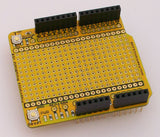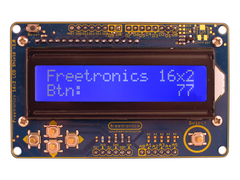For the mathematically-inclined, various numbering sequences are of interest and a more popular one is the Fibonacci sequence. For the uninitiated, Fibonacci numbers may start with zero, then follow on with 1, 1, 2, 3, 5, 8, 13, 21, 34, 55, 89, 144 and so on. Each number is calculated by adding the two numbers before it, for example 8 = 5 + 3, 55 = 34 + 21, and so on. You can learn more about these here and here.
The generation of these are a classic programming challenge, and one taken by Caleb from the Hobby Hobbyist blog. He's used an Arduino to calculate the number sequence and display them in binary form using eight LEDs, as shown in the following video:
Caleb provides the sketch to recreate this yourself on his website, which leaves it open for performance enhancement and experimenting. And for more, we're on facebook, Google+, and twitter - so follow us for news and product updates as well.
Have you been reading about Arduino and would like to understand more so you can work with projects like the example above, but not sure where to start? Then order one of our Experimenter's Kit for Arduino:
The package includes a wide variety of parts, sensors and modules including: a servo motor, lights, buttons, switches, sound, sensors, breadboard, wires and more. Furthermore a Freetronics Eleven Arduino-compatible board is included to make this an extensive hobby experimenter, inventor and starter kit.
However we don't leave you alone to figure it all out, included is a great project and instruction booklet, plus access to a supporting web page and software examples. In other words - this is everything you need to get started for a fun range of electronics and Arduino related projects! So to get started or for more information and to order, check out the product page.






















